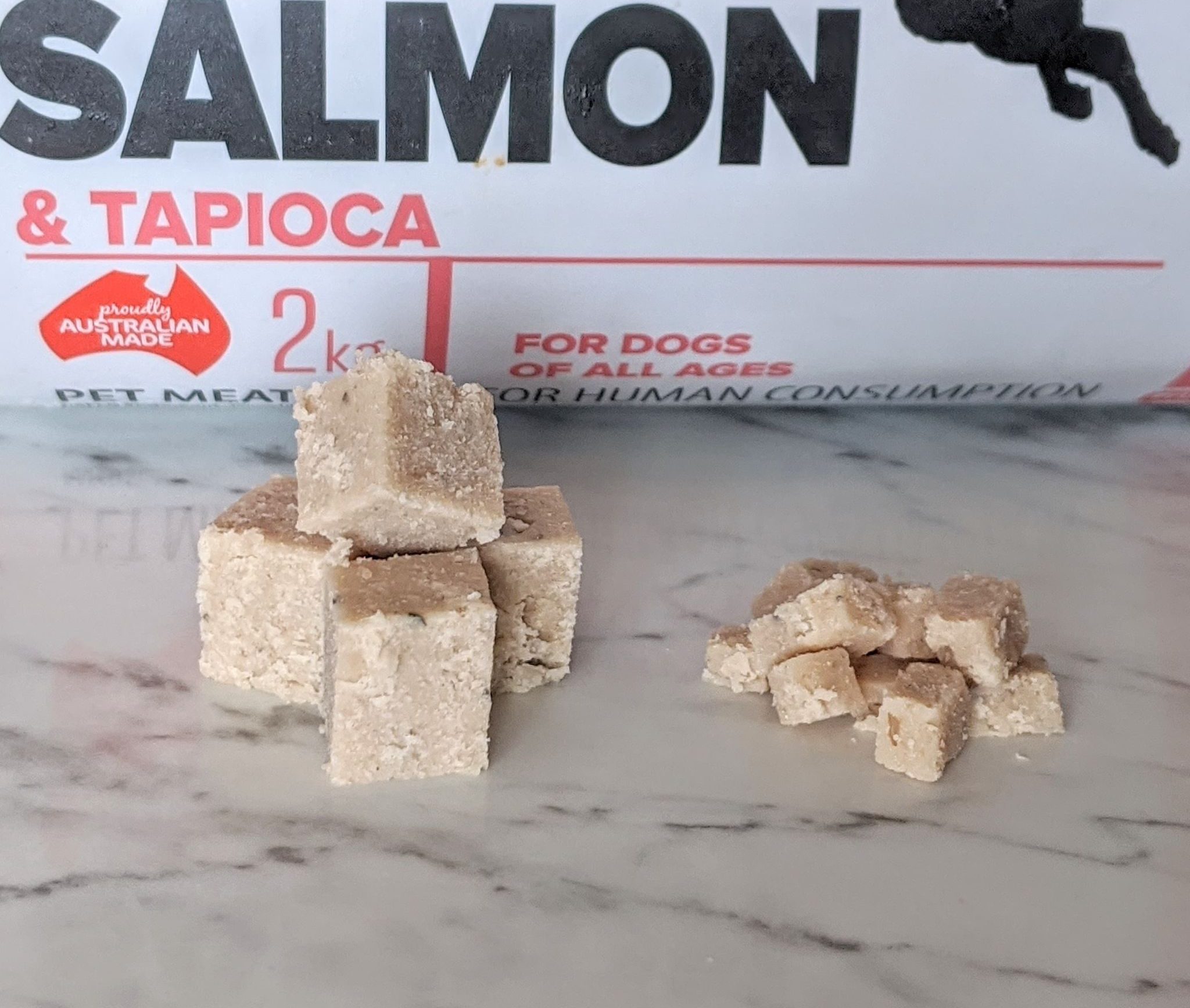With so many confusing options at the pet store and the supermarket, it can be confusing trying to find the right sort of treat to use for dog training classes. There’s a few different factors to consider that might differ between dogs, let’s take a look.
Size:
Today I took a 30kg golden retriever and a 5kg löwchen to training and while they eat the same food, you can see there’s a pretty big size difference to their treats. Some dogs will work for tiny crumbs while others require a minimum size for saliency.
If I tried to feed the tiny ones to the golden retriever they would get lost in his jowls and he wouldn’t be able to feel them being swallowed, so he needs them cut larger. If I tried to feed the larger ones to the löwchen she would get full in a matter of minutes and no longer want to work for food. She might also take too long to chew them up, thus slowing down our RoR (rate of reinforcement).
It may take some trial and error, but the aim is to find the minimum size that your dog will work for, so that it can be swallowed quickly and they don’t fill up too fast. People often cut their treats quite large, but the maximum most dogs need would be approx. 1cm cubed.
Value:
We need to keep in mind that different foods may hold higher or lesser value. Lesser value treats (eg, kibble) might be fine at home but higher value treats might be needed in a more distracting environment such as training class. Dry treats tend to be lower value than moist ones, and even high value dry treats can make a dog thirsty and not want to keep eating them part way through a class.
It’s not unusual for a dog to refuse to eat in their first class, even when you bring along their favourite food. This usually has less to do with the value of the food and more to do with the dog’s emotional state. If the dog is too anxious or over-excited, they won’t want to eat. If this happens with your dog, be sure to alert your trainer so that they can help you.
Texture:
Texture usually doesn’t matter so much to the dog, but can make a big difference for us. Something that is soft, slimy, sticky, or crumbly can affect our mechanical skills and ability to deliver the treat quickly and effectively. A crumbly treat is more likely to get dropped, a sticky treat might get stuck between your fingers etc. There’s not necessarily anything wrong with using these treats, but they can be a bit more difficult especially if the handler isn’t very nimble.
Health:
We also need to consider the health of our dog when training with treats. It’s best to note how many treats we’ve fed through the day and minus that from what we feed at dinner time to prevent our dog from gaining weight. We also should look at how much we are displacing their diet, are our treats too salty, or too rich and might cause an upset tummy? Are they too high in fat? Using a food that is a complete diet will help keep your dog healthy and trim.
So What Should I Try?
At Every Dog, we tend to stick to Prime 100 SPD rolls as they tick all of these boxes for most dogs. In terms of texture, we prefer:
- Turkey & Flaxseed (a suitable diet for puppies)
- Kangaroo & Pumpkin
- Salmon & Tapioca
These aren’t your only options of course, and each dog has different preferences. We also use dry dog food with our own dogs because our dogs are willing to work for it and are used to paying attention in distracting environments. Some other treat ideas that work well for those extra fussy dogs are things like:
- BBQ Chicken
- Cheese
- Chicken Hearts
- Freeze Dried Lamb Green Tripe (K9 Naturals)
- Freeze Dried Chicken/Kangaroo/Beef (Laila & Me)
If you’re not sure what your dog will work for in a distracting environment, plan ahead! Bring several different types of treats to class and experiment. Losing focus? Switch treats! See if a change is all you need, if not, try offering your dog a drink. It won’t take long to learn what your dog enjoys, then you’ll be making the most of your training classes.
